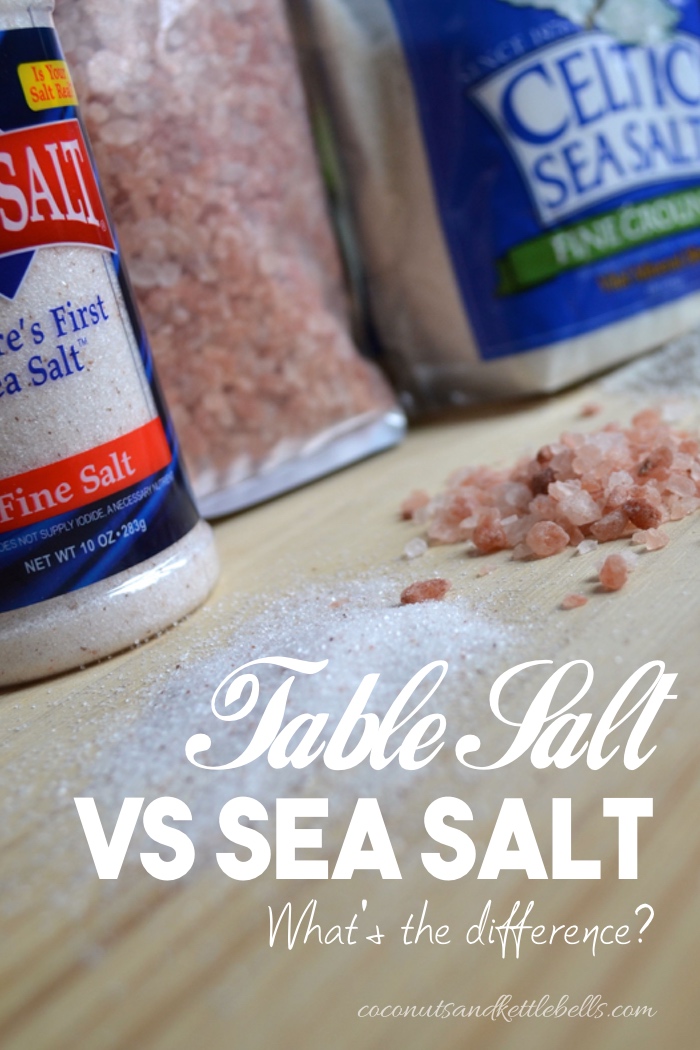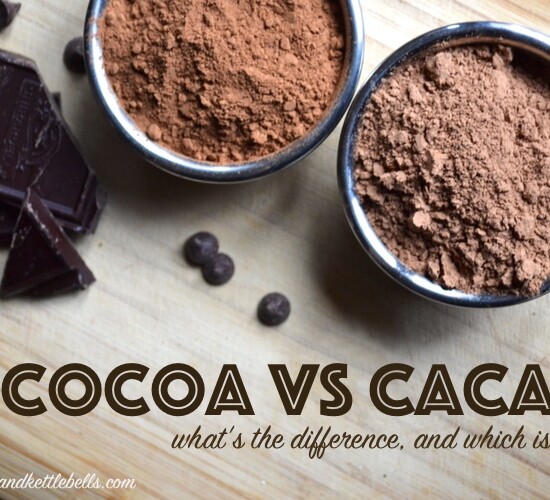This post may contain affiliate links. Please read our disclosure policy.

Visiting the salt section in any grocery store can be more confusing than trying to decipher all the names for sugar.
If you’re looking for salt, your options include table salt, sea salt, lite salt, Himalayan Pink Salt, Celtic Sea Salt, fancy flavored salts, “no salt” salt, kosher salt, Redmond RealSalt and more. And really – most of us just simply want to know the difference between table salt vs sea salt before venturing into figuring out why some salts are pink, or require special grinders.
While it may seem like salt is just salt, in short – there is much more to the story. The difference between table salt vs sea salt does matter, and the one you choose can have an impact on your health.
Table Salt vs Sea Salt
For thousands of years, salt was one of the most sought-out commodities of human-kind. Early civilizations were based around salt-bearing grounds, and as populations grew, salt became one of the first commodities of trade. In fact, as early as the 6th century, salt was traded ounce for ounce of gold. Salt has a rich history in medicine, cuisine, and religion, and phrases such as “the salt of the earth” and “worth your salt” all refer to the historical value of salt in our society.
Chuck the table salt!
When most of us think of salt, we envision the canister with the pop-up spout and a girl in yellow holding an umbrella on the label.
The popular tag line adorned on the canister, “When it Rains, it Pours” still exists today to describe its convenient “anti-clumping” properties. Although it says simply “iodized salt” on the label, a quick peak at the ingredients list on the back will show: salt, calcium silicate, dextrose, and/or potassium iodide. Saaay what? is right.
Some people, in attempts to reduce their sodium intake purchase “lite” salt or reduced sodium products thinking they’re making a health-promoting choice. “Lite” salt ingredients typically include: salt, potassium chloride, calcium silicate, magnesium carbonate, dextrose, and potassium iodide. Yeah. That’s scary.
So, how did it get this way? Traditional “table salt” is extracted from the rocky under layers of the earth through salt mining. Once mined, it’s taken through chemical and high-heat industrial processing (up to 1,200 degrees Fahrenheit) that removes all of the valuable trace minerals except for sodium chloride (NaCl). This high heat processing can alter the chemical structure of the salt, and strips away all of the minerals it existed with in nature. Not good.
In order to turn this product into one that “pours,” anti-caking agents are added like calcium silicate or compounds that contain aluminum. Although more research is needed, aluminum has been linked to brain dysfunction and is generally known as a neurotoxin.[1][2] Is your mouth watering yet?
These anti-caking agents are approved for use right along side triclosan, BPA, parabens, GMOs, synthetic compounds listed in artificial flavors, and food color additives.[3][4][5][6]
But we’re not done! To add iodine, potassium iodide is added to a majority of refined salt products. To stabilize the iodide compound, manufacturers add dextrose which turns the salt a purplish color. For the finale, a bleaching agent is added to restore the end-product to a “natural” white color.
Sound familiar? Maybe like, highly refined sugar and vegetable oils?
Sea salt: the rocks that rock
Before exploring the main difference between table salt vs sea salt, an important distinction must be made. There are many conventional processed salts listed as “natural sea salt” that are still highly refined, striped of minerals, and still contain anti-caking agents. A general rule of thumb: if it’s pure white, and made by the same people who make table salt, it’s been highly processed and isn’t real sea salt.
Unrefined sea salt is harvested by hand from ancient sea beds or by evaporating sea water. They contain 60+ trace minerals which gives the salt a pink or greyish color, and a stronger, more savory flavor. The most popular varieties include Celtic Sea Salt from the oceans in France, Himalayan Pink Salt from ancient sea beds in Pakistan, and Redmond RealSalt from ancient sea beds in the United States. There is “less” sodium in these salts because depending on the variety, they contain around 85% sodium chloride and 15% trace minerals.
Although sometimes deemed “too expensive,” unrefined sea salts can be extremely affordable when purchased in bulk from smart sources. Mr. Coconuts and I purchase both our Himalayan Pink Salt and Celtic Sea Salt for around $6 – $8 for a 2 lb bag. We have our own sea salt grinders that we can adjust to make the salt very fine, and the strong flavor means we use less. As a result, we pay about $10-15 a year for our salt. And the best part? We’re getting rich minerals into our diet in the process.
Worried about not getting enough iodine? Some countries that have added supplemental iodine to their salt have seen an increase in autoimmune thyroid disease.7 Getting iodine from natural, whole food sources like kelp, eggs, and fish will result in appropriate absorption with little chance of going over necessary in-take levels.
But salt is BAD!
In recent years, salt has been deemed one of the most unhealthy substances of our modern culture. While early research uncovered a correlation of salt intake and high blood pressure, more recent quality research has shown no evidence that cutting salt intake reduces the risk of heart disease, stroke or death.8 In fact, reduced sodium intake has been correlated with increased risk of death.
Furthermore, a study from the Journal of American Medical Association, which followed over 3,000 healthy Europeans for eight years, found that low-salt intake increase the risk of heart disease by 56%.9
So why would low-salt recommendations be a detriment to us? In addition to helping remove cortisol from our body, salt aids in proper brain and nervous system function, it’s a major component of blood plasma and lymphatic fluid, and it’s needed for the manufacturing of hydrochloric acid which helps us break down food and assimilate nutrients into our cells. Sodium is also a key player in the sodium-potassium pump, which regulates the nutrients that go into every cell in our body.10
So I get to eat lots of salt?
Salt, as with anything, can be detrimental when over-consumed – specifically in the form of processed table salt. But, assuming that salt is the cause of heart disease overlooks recent evidences in the scientific literature, and fails to recognize that diets high in table salt are usually accompanied by highly processed sugar and grain products. In fact, over 75% of the salt consumed is done so through processed foods.
Salt in its unrefined, natural form is actually hard to over-consume to taste. It’s why our ancestors, as recent as a few hundred years ago, used salt frequently in cooking and didn’t experience high rates of chronic disease.
Salt is easy to over-consume when it’s done so through processed and packaged foods. By removing processed foods, you’ll not only reduce your intake of table salt, you’ll also reduce your intake of highly processed sugars, grains, vegetable oils and other toxic food additives that create modern chronic diseases in the human body including diabetes, heart disease and cancer. Using an unrefined sea salt to taste in ratios appropriate with your activity and sweat levels will provide your body with the salt you need to survive, and thrive.
Bonus tip!
In addition to chucking your table salt, I highly recommend purchasing items like grass-fed butter, nuts, vegetable root chips and nut butters in an unsalted form – and then salting them to taste with unrefined sea salt. Don’t purchase spice mixtures that have conventional salt in the ingredients, and opted for meats that aren’t “cold cuts” or cured in salt. Making your own traditional foods that typically contain loads of processed table salt like broths, condiments, and breads at home.
What do you think about salt? Have you switch to unrefined sea salts recently? Let me know your experiences below!
Keepin’ it human,






Joan Peterson says
What grinder do you use? I have yet to find one that will stand up to daily use.
Noelle says
Hi Joan! Just purchased these grinders – so far so good! I find I have to replace them every 2-3 years.
Ridley Fitzgerald says
It’s great to know more about sea salt and what it is. I like how you said that it has a ton of trace minerals in it, compared to table salt. I think I’ll switch out my normal salt with this to get those benefits.